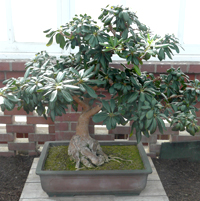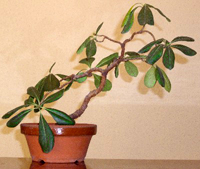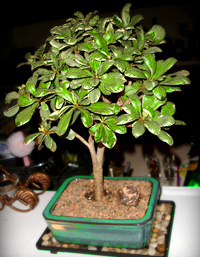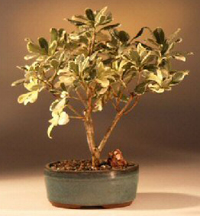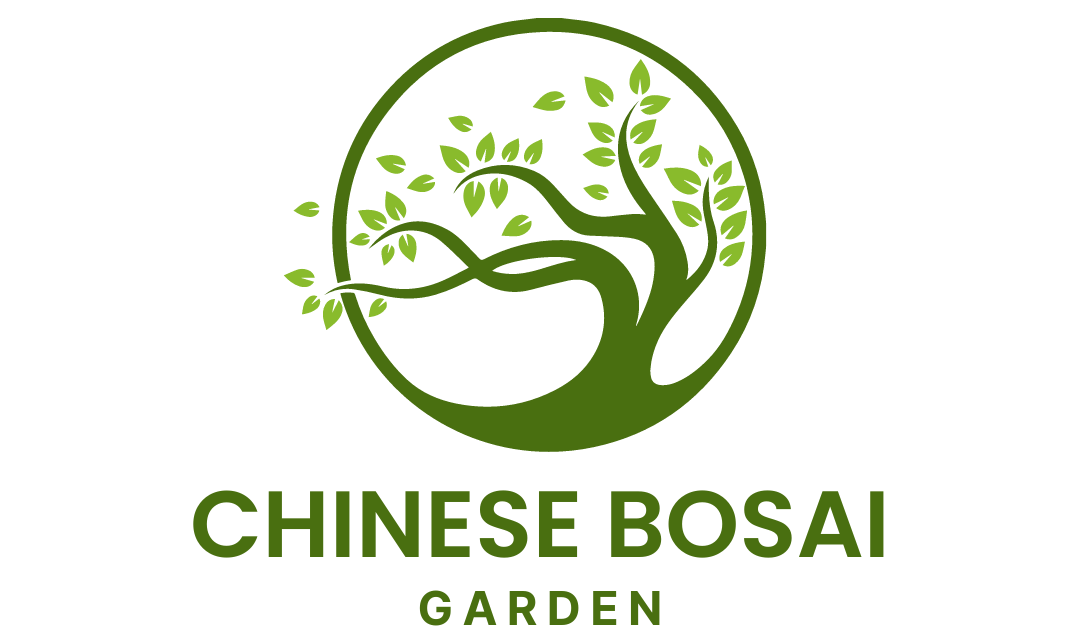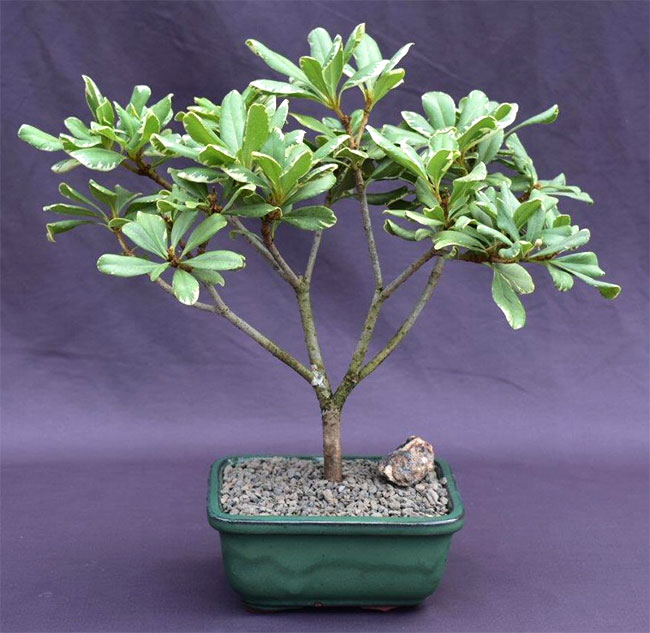
The Japanese Mock Orange Bonsai Tree, scientific name Pittosporum tobira, is a gorgeous evergreen shrub with wide leaves and creamy fragrant flowers.
What makes this plant a great bonsai is that it is very durable, hardy, drought tolerant, and can take severe pruning. Great for indoors.
Additional Information
Family: Pittosporaceae
Scientific name: Pittosporum tobira
Common Names: Japanese Mock Orange, Japanese Pittosporum, Tobira, Japanese Cheesewood, Mock Orange, Australian Laurel.
Origin: Native to China and Japan but is grown in mild climates all over the world.
Appearance: It is an evergreen shrub with stiff branches and leathery, glossy, oval leaves. Leaves are very ornamental with wide edges that curl down and inward. They are lighter and have a dull surface on the lower sides.
Flowering: In late spring, it produces very fragrant, white flowers that grow in clusters on inflorescence at the end of branches. The fragrance is similar to Orange Blossom, hence the name Mock-Orange.
Flowers have five petals and are born white but slowly turn to creamy yellow. They are followed by woody hairy capsules with black seeds inside.
Outdoor/Indoor Use: Both. Can be grown outdoors if you live in a warm climate.
Light Requirements: Full sun to shade.
Water Requirements: Likes moist and well-drained soil but can also tolerate drought for short periods of time when mature enough.
Hardiness: Grows best in the USDA Zones 8 – 10. Should be protected from temperatures below 40F.
Insects and Diseases: Aphids, mites, leafhoppers, the cotton cushiony scale, and root-knot nematodes.
Propagation: By seeds and cuttings.
Buy Japanese Mock Orange Bonsai »
